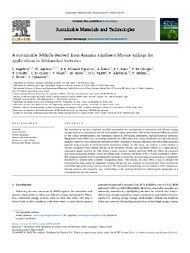Embrapa Instrumentação
A sustainable ?-MnO? derived from Amazon rainforest Mn-ore tailings for applications in lithium-ion batteries.
Autoria: ANGELETTI, L.; AGOSTINI, M.; MIRANDA FIGUEIRA, B. A.; LATINI, A.; PARIS, E. C.; De GIORGIO, F.; SCHULTZ, T.; Di CONZO, C.; MURA, F.; ROSSI, M.; YADAV, N. G.; ADELHELM, P.; MAZZEI, F.; BRUTTI, S.; QUARANTA, S.
Resumo: The transition to net-zero emissions by 2050 necessitates the development of sustainable and efficient energy storage systems to complement the rise in renewable energy generation. Lithium-ion batteries (LiBs) are pivotal in this energy transformation, yet challenges remain in developing sustainable, high-performance materials. Manganese oxides (MnO?) are promising candidates for LiBs anodes due to their abundance and high theoretical capacity. However, the commercial synthesis of MnO? materials is resource-intensive, and the mining processes generate large amounts of environmentally hazardous tailings. In this study, we propose a novel method to recover manganese from mining tailings in the Brazilian Amazon and synthesize ?-MnO? as a high-capacity conversion anode material for LIBs. Using a green recovery method involving KOH and H?O?, we extracted potassium manganate (K?MnO?) from the tailings with a recovery efficiency of 90.3 %,and synthesized ?-MnO?. The prepared material showed promising electrochemical properties, demonstrating its potential as a sustainable alternative to commercially available manganese oxides. This process not only offers a way to mitigate the environmental risks posed by manganese mining tailings but also provides an economically viable solution for producing high-performance battery materials. The developed methodology can be applied to other manganesebearing residues and low-grade ores, contributing to the growing demand for battery-grade manganese in a sustainable and circular manner.
Ano de publicação: 2025
Tipo de publicação: Artigo de periódico
Unidade: Embrapa Instrumentação
Palavras-chave: Green recovery
